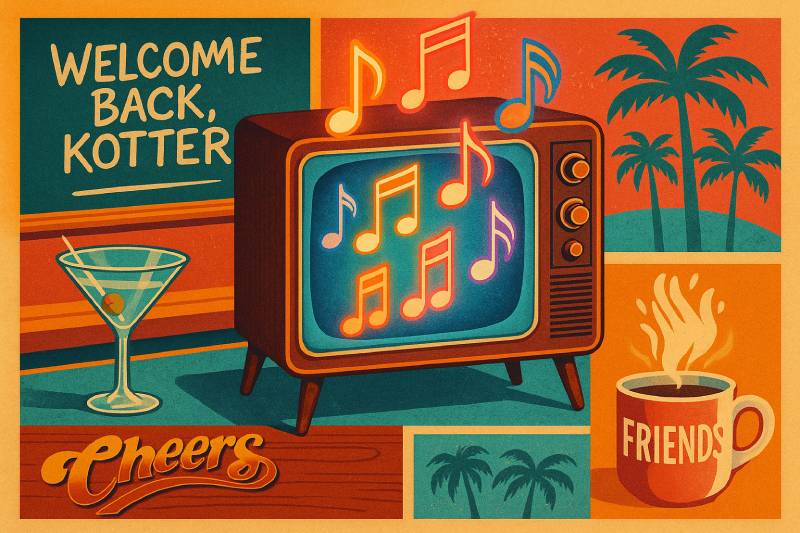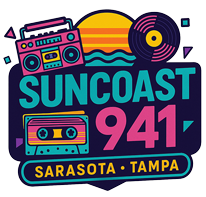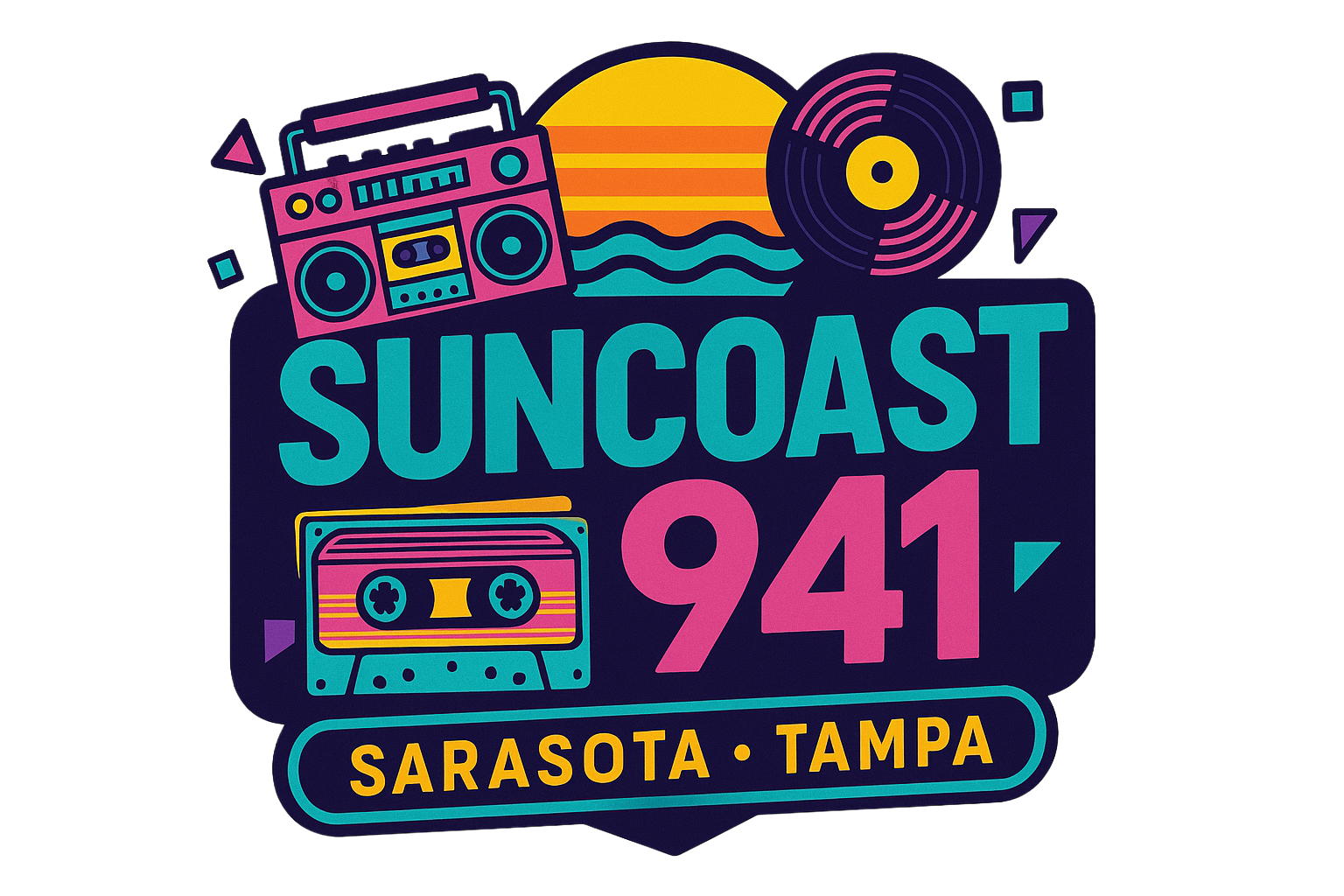
Hit Songs From TV Shows: How ’70s, ’80s, and ’90s Themes Became Pop Culture Anthems
TV wasn’t just background noise in the ’70s, ’80s, and ’90s it made hit songs. From Welcome Back, Kotter and MASH* to Cheers and Friends, television created soundtracks that outlived the shows themselves. Here’s how small-screen themes became chart-toppers and cultural touchstones.
Lately, I have been thinking about how some of the coolest tunes were featured in tv shows.
If you haven’t listened to the full version of Quincy Jones’ “The Streetbeater” you are really missing out. I have to think that the early ’70s, television was super fly. When you listen to “The Streetbeater”, the instrumental theme composed by the legendary Quincy Jones for the sitcom Sanford and Son. Originally released in 1973 on Jones’s album You’ve Got It Bad Girl, this track became synonymous with the show’s opening credits.
The melody, a smooth blend of electric blues and funk didn’t chart on the Billboard rankings but its cultural impact was undeniable. It secured the 9th spot in a Rolling Stone reader poll of the best television theme songs, solidifying its place in TV history. Beyond Sanford and Son, the track has been featured in various media, including episodes of Scrubs and The Simpsons.
In essence, The Streetbeater isn’t just a theme song; it’s a funky, unforgettable signature that continues to echo through the annals of television history.
Television in the ’70s, ’80s, and ’90s didn’t just entertain us — it created some of the most memorable soundtracks of our lives. Back then, you didn’t have Spotify dropping weekly playlists or TikTok making songs viral overnight. Instead, the small screen was the tastemaker, pumping a theme or placement into millions of homes at the same time. The result? TV shows didn’t just borrow from pop music — they made pop music.
The 1970s: TV Themes as Billboard Gold
The ’70s set the stage for something remarkable: television theme songs climbing the radio charts like mainstream singles.
- “Theme from S.W.A.T.” by Rhythm Heritage (1976)
An instrumental funk jam from a gritty cop drama hit #1 on Billboard. Think about how unusual that is — no lyrics, just pure groove tied to a police procedural. It proved that if the hook was good enough, people would crank it in their cars just like they did on their TVs.
- “Welcome Back” by John Sebastian (1976)
Written for Welcome Back, Kotter, the song carried John Sebastian (former frontman of The Lovin’ Spoonful) back to the top of the charts. The show introduced Vinnie Barbarino (a young John Travolta), but the theme itself was just as famous. The melody wasn’t flashy, but it had warmth — the perfect soundtrack for a nation looking for comfort.
- “Suicide Is Painless” (MAS*H theme)
The show itself ran from 1972–1983, and its theme was unforgettable. The instrumental opened every episode, but the lyrical version (below) is darker and haunting and became a #1 hit in the UK. It’s a fascinating case of tonal contrast: a comedy-drama about war carrying a title track about despair, and somehow it all worked.
This decade proved TV music wasn’t a novelty. It could stand toe-to-toe with radio’s best.
The 1980s: Sitcoms, Sentiment, and Singalongs
By the ’80s, TV themes had evolved into little anthems. Some cracked the charts, but even the ones that didn’t became woven into everyday life.
- “Believe It or Not” by Joey Scarbury (1981)
The Greatest American Hero was campy, goofy, and charming — and its theme song soared to #2 on Billboard. Everyone remembers the hook: “Believe it or not, I’m walking on air…” It’s nostalgia wrapped in spandex. Even George Costanza used it as his answering machine gag on Seinfeld.
- “Where Everybody Knows Your Name” by Gary Portnoy (1982)
The Cheers theme didn’t chart high, but it didn’t need to. It became an anthem for community and belonging, outlasting the show itself. To this day, bars and karaoke nights turn into instant singalongs when that piano kicks in.
- “Thank You for Being a Friend” (Cynthia Fee’s version, 1985)
Originally written by Andrew Gold, this song got its second life as the theme to The Golden Girls. It wasn’t just about four women in Miami — it became a shorthand for gratitude, loyalty, and found family. The show ended in 1992, but the song still shows up in commercials, memes, and social media tributes.
The ’80s also gave us TV as a cultural mirror: the songs reflected not just the characters, but the national mood where friendship, belonging, and quirky optimism.
The 1990s: Pop Crossover and TV-Driven Radio Hits
If the ’70s made themes into singles, and the ’80s made them cultural touchstones, the ’90s turned them into mainstream pop hits.
- “I’ll Be There for You” by The Rembrandts (1995)
Friends wasn’t just a show — it was a phenomenon. NBC originally asked The Rembrandts to cut a theme, but radio stations started spinning a full-length version. It hit the Billboard Top 20, but more importantly, it defined the decade. Clap along with those four beats, and everyone knows what you’re referencing.
- “How Do You Talk to an Angel” by The Heights (1992)
This one’s almost comic in hindsight. The show itself was short-lived, but the theme went #1. A one-hit wonder attached to a one-season wonder — proof that sometimes lightning strikes even when the series fizzles out.
- “I Don’t Want to Wait” by Paula Cole (1997)
For anyone who grew up with Dawson’s Creek, this song isn’t just about love — it’s about identity. The yearning in Cole’s voice perfectly matched the teen angst of the late ’90s. While not written for the show, it became inextricably linked to it.
These songs remind us that in the ’90s, the TV-to-radio pipeline was still alive and strong. A show didn’t just launch a career — it launched a soundtrack.
Why These Songs Still Resonate
I’ve been thinking about what made these songs stick and I think I have a nice little list:
- Shared national memory
Before streaming fractured audiences, everyone was watching the same shows. When you heard the song, you were part of a collective moment. - Repetition with emotion
A theme song wasn’t a one-off — you heard it every week. Add in the emotional rollercoaster of storylines, and the tune dug deep into memory. - Cross-generational reach
Kids, parents, grandparents all watched TV together. These songs became part of family life, not just background noise. - Pop culture reinforcement
Radio play, jukeboxes, commercials, even comedians (like Seinfeld’s answering machine gag) kept these songs alive outside of the shows themselves.
Let’s Face It….It’s All About Nostalgia
In the ’70s, ’80s, and ’90s, television was the nation’s playlist. It made themes into chart toppers, gave old songs a second life, and created singalongs that still trigger instant nostalgia today. These weren’t just tunes tied to shows and they were cultural timestamps.
So, what’s the one TV theme you still find yourself humming? Whether it’s the Cheers piano, the claps from Friends, or the soaring chorus of Greatest American Hero, chances are it’s more than just a song. It’s a memory, a mood, and a moment you’ll never forget.











